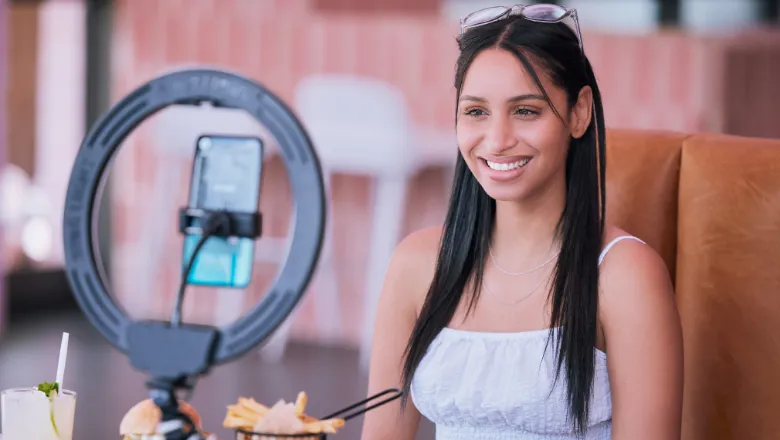"By looking at how to capitalise on consumer-generated content, retailers are saving costs associated with crafting and placing advertising, while potentially increasing the persuasiveness of resulting posts because they come from consumers rather than the firm. But retail designers need to understand what consumers are looking for in a space. A flat, heavily branded wall is probably not going to have the desired effect."
Dr Matteo Montecchi, a Lecturer (Assistant Professor) in Marketing, King’s Business School
12 October 2023
Instagrammable spaces unlock the power of consumer-generated content
King’s academics analysed thousands of Instagram posts to reveal the top factors behind interior spaces that are commonly reshared on Instagram by members of the public.

Researchers from King’s Business School, the University of San Diego, Swinburne University of Technology and the University of Arizona shed light on the phenomenon of indirect advertising via consumer-generated content, or ‘Instagramming’.
In the first study of its kind, academics interviewed designers, architects and used artificial intelligence (AI)-enabled computer vision and manual coding to analyse over 43,000 Instagram posts to see how the characteristics of physical environments inspire consumers to share images of them on social media and as a result, generate indirect advertising for retailers.
The rise of indirect advertising challenges the traditional definition of advertising as a form of communication that is both paid-for by a brand and where third parties, such as advertising agencies, control exactly what the consumer sees.
This also represents a new form of advertising, where the outcome (posting on social media) is prompted by an environment. Marketers have found this a highly effective way to promote products, services and experiences on social media without having to pay for ad placements.
Whilst environments have traditionally been studied from the perspective of their effect on consumers while they are in the space, designers have increasingly focused on designing spaces that look good in photographs. This research shows that carefully curated bright lighting, coloured lighting, and the number of colours all enhance the likelihood of someone capturing and sharing content.
In particular, researchers found that lighting design which illuminates faces and so makes consumers look attractive in photographs can result in more indirect advertising. This explains the phenomenon of ‘bathroom selfies’ where consumers take advantage of lighting designed for applying make-up and checking hair, even though these spaces may lack other prominent experiential design features.
The research findings show:
- Environments that use more interactive props, colour, and brightness were associated with greater indirect advertising.
- The more colours present in a space, the more likely a space was to inspire indirect advertising.
- Styling characteristics that were ‘glitterific’ and ‘over the top’ were found to have positive effects, indicating value in more extreme styling elements and those that subvert visual expectations.
- Co-production plays an important role in driving posting content: consumers have a desire to engage interactively in the co-production process, with findings showing that small props, dynamic props, and props that can be entered are all important drivers of indirect advertising.
- Environments conveying meaning are less likely to stimulate indirect advertising than those which facilitate self-constructed meaning: it is thought that environments laden with pre-packaged meaning are likely less authentic and hence less likely to be captured and shared as indirect advertising.
- Flat ‘Instagram walls’ – i.e., designed flat surfaces with logos emblazoned on them intended for photographs to be taken in front of – may be less important than interactive environments; specifically, ones that can be entered, and may include malleable props and bright but indirect lighting.
"Some studies suggest that up to 40% of millennials choose a travel spot based on its Instagrammability. The findings in this research have direct influence on approaches to retail, tourism and beyond.”
Dr Matteo Montecchi
The study was published in the Journal of Advertising.

